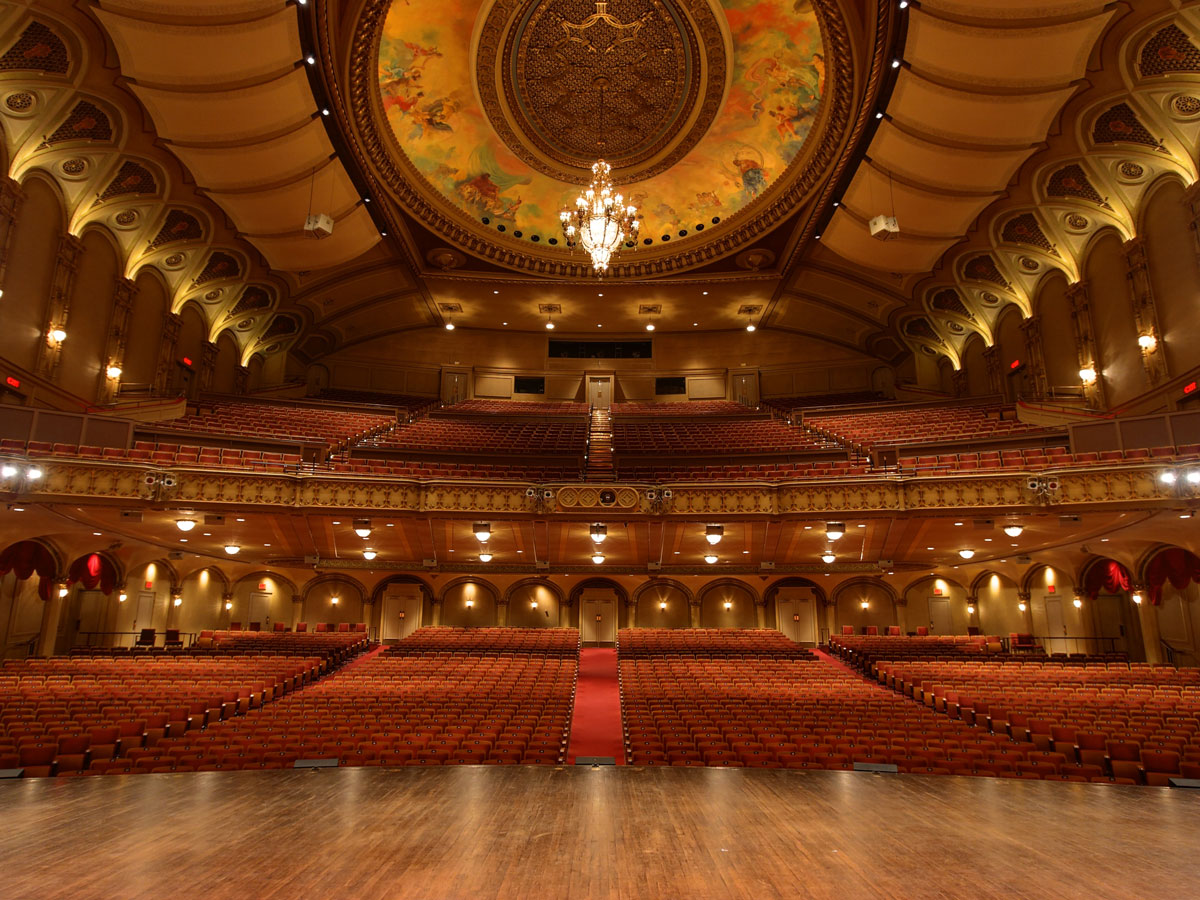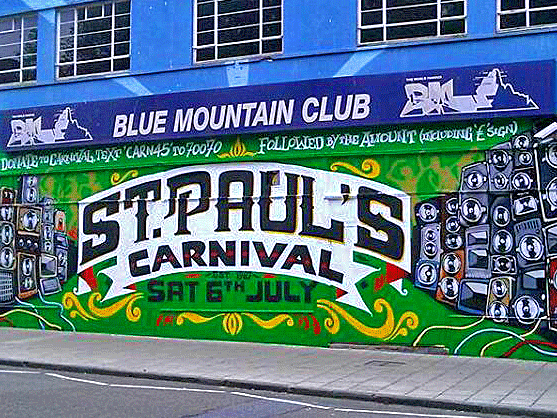The fight to save Hamilton House
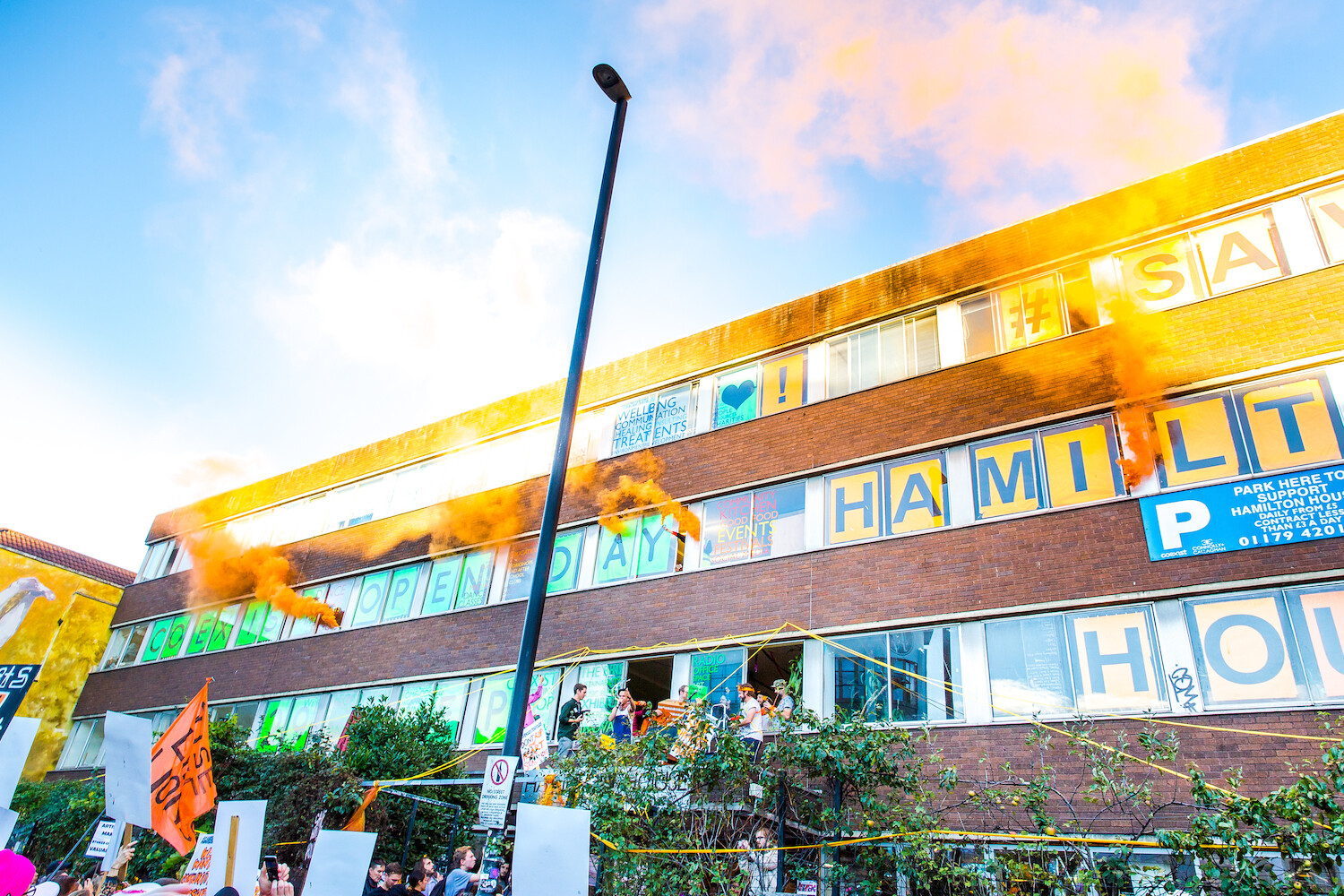
Photo by Claudio Ahlers
This busy Bristol hub of essential resources is under threat from developers. Joe Fearfield finds out why
Situated in the heart of Bristol is Stokes Croft. It’s an area recorded as having a rebellious nature since the eighteenth century, and its renegade spirit continues to this day. Hamilton House, a community building that hosts an endless list of amazing workshops, live music, refugee and homeless support, creative studio spaces and a thriving bar and restaurant, is a Mecca for both Bristolians and those visiting the city to experience the best it has offer. It’s a bastion of independent spirit and community culture that’s under threat.
This building is run by a social enterprise named Coexist. When I arrive at reception, I ask if there is anyone from the organisation who is willing to speak to me. Gem the shop manager is quick to offer her time. She’s been a part of Coexist for seven years and has seen the transformation of this building from a dilapidated, unused space into the thriving and busy community project it is today. In the upper floors of Hamilton House, we sit in the reading room. Gem starts by telling me about the early beginnings of the social enterprise. “It involved clearing every floor of needles and bottles as it was formerly squatted. Floor by floor it has turned into a usable and productive space with art studios, dance studios and more. Its grown amazingly into the project that is it today.”
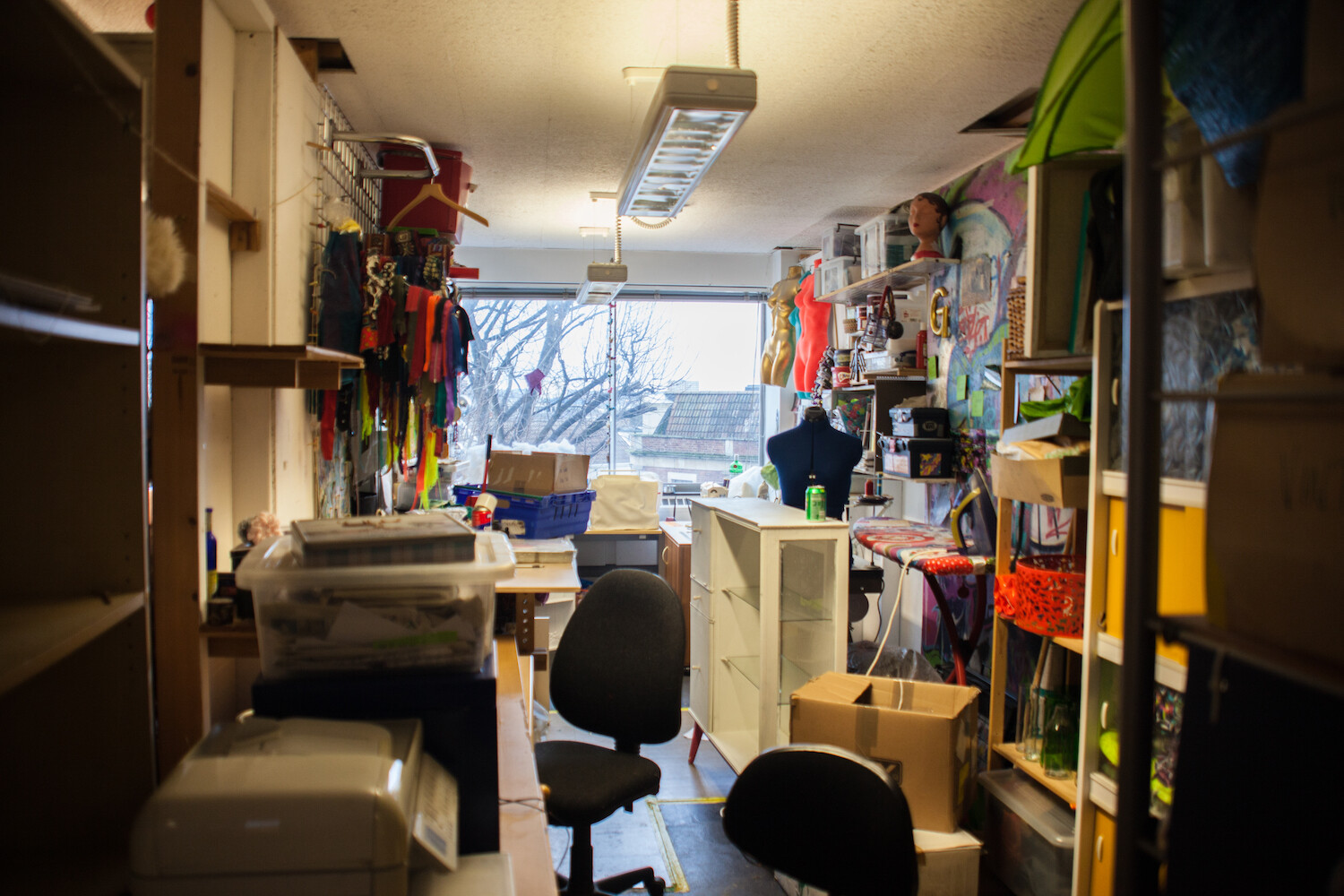
Photo by Alex Felstead @ Common Ground Photography
Since this amazing transformation Hamilton House has become “very much centred in this local community.” Existing beyond just a social space, its range of services, like the wellbeing centre and the community kitchen, give important support for homelessness and addiction in the area, providing an answer to some of the problems Stokes Croft faces. Hamilton House is home to a number of other community outreach schemes such as The Bristol Bike Project and DMAC, but also provides a space for creatives to display and showcase their work.
Gem proposes that what’s unique about this organisation is that it is entirely a group effort that cannot be summarised by one person’s vision or work. “People have come with their microcosm of ideas and created different pockets of what we are as Coexist today. The cross pollination of what goes on here doesn’t happen anywhere else”. But the service that Coexist provides for the community, budding entrepreneurs, NGOs, creatives and other local businesses is under threat from serious changes that are happening in the city of Bristol.
Gem has lived in the area for fifteen years and is amazed by the transformation that she has seen. “Stokes Croft is at a real sweet spot right now, but it is at this strange tipping point now where it has been this amazing creative underbelly and suddenly everyone wants in – which is to be expected.”
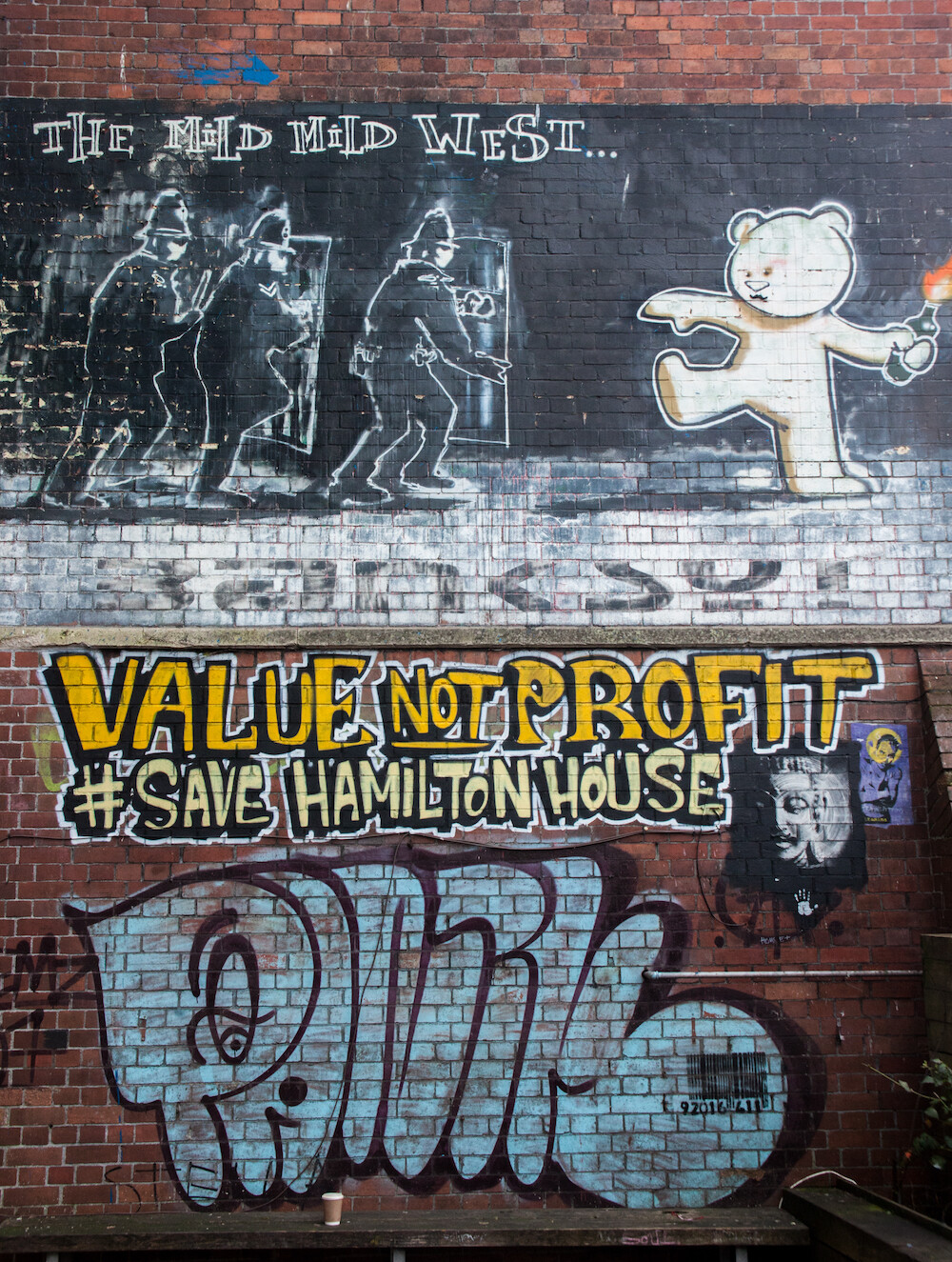
Photo by Alex Felstead @ Common Ground Photography
Due to rising interest in property in the area due to the successful regeneration of Stokes Croft (helped by the hard work of local community organisations such as Coexist), Hamilton House’s rent is to be increased by 400%. They will also lose approximately a third of their revenue as a large portion of the building is to be turned into flats, making those at Coexist feel as though they are to be gradually priced out until they have no option but to leave.
“It’s all about property these days as people feel like it’s the only safe and lucrative investment. We can see it in all areas all over Bristol where people are buying there second and third properties, driving up price. Organisations like ours move to different areas, to only be outpriced again.”
Gem shows me around the studio spaces now destined to exist as ‘affordable’ homes. I see all manner of amazing paintings, sculptures, jewellery and even mosaics hanging on the walls and lying on paint stained workbenches. According to Gem, “There are 400 odd independent creatives working here showcasing their work around Bristol and adding to its culture and to the cross pollination of ideas.” After speaking to some of these artists, I get a greater understanding of the shared sadness and dread at what one artist called “the impending doom” of having to leave these creative spaces behind, which I imagine have become a second home to many of their occupants.
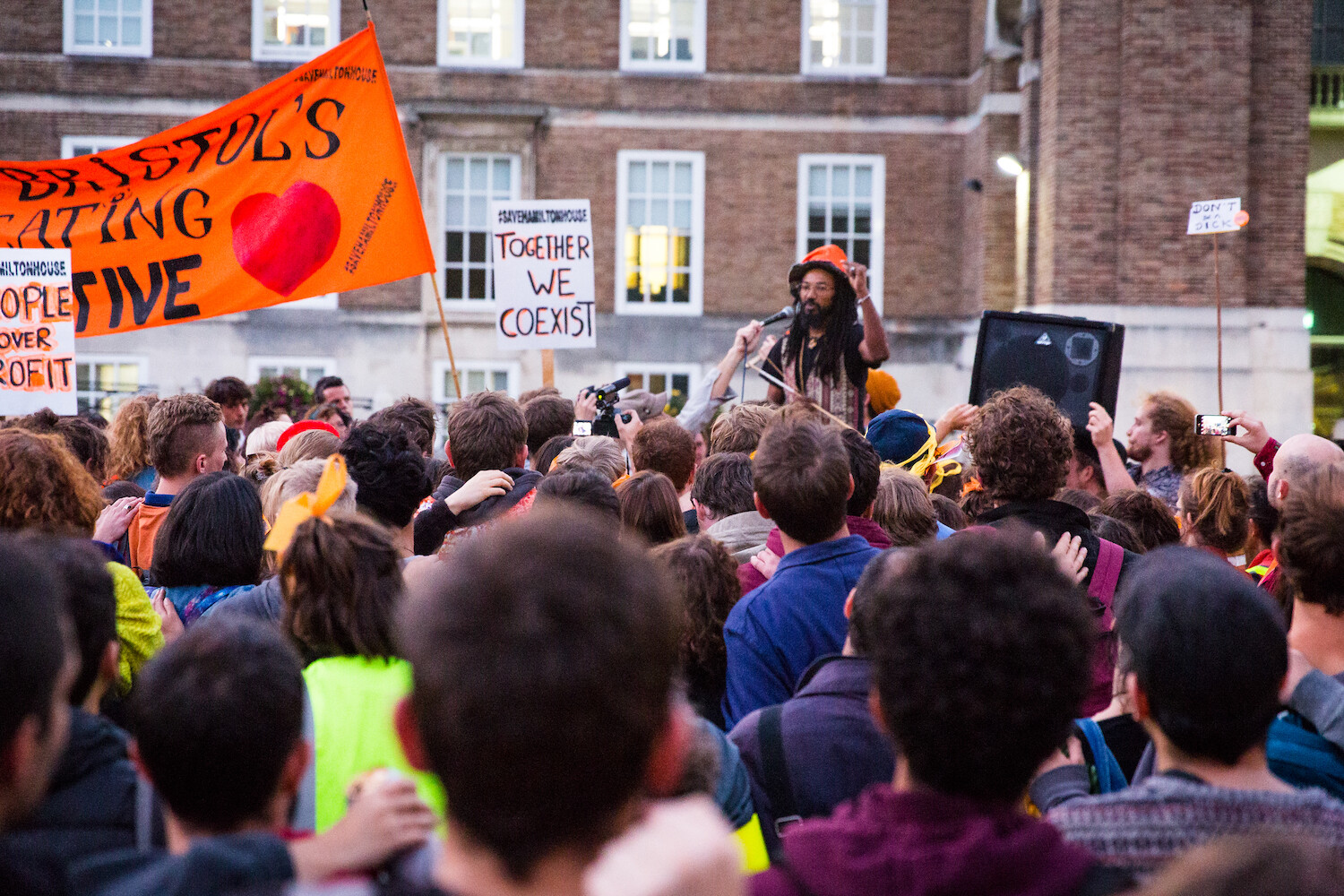
Photo by Claudio Ahlers
As of mid-March 2018, Coexist have suffered a ‘part eviction’. Over 200 individuals have had to leave their studios. Due to a loss in morale and the earlier mentioned ‘impending doom’, more people renting private spaces have begun leaving other parts of the building. An official response from the Co-exist website released on the 15th of May stated that: ‘The consequences of a part eviction would undermine the purpose of Coexist as a Community Interest Company: Countless artists would need to relocate, all theatre and live performance would need to stop, outreach projects for some of Bristol’s most vulnerable people would discontinue, all projects operated through the Community Kitchen would have to close – as would the Wellbeing therapy centre, and the In-Alignment dance studios – which alone is used by hundreds if not thousands of people each week. Coexist will endeavour to fight for the continuing community use in Hamilton House.”
The evolution of Hamilton House is astounding and is in itself a microcosm of what Gem phrased “a sustainable and complete community.” The fundamental role Coexist have played in the regeneration of the building goes further than its doors – the organisation has improved the lives of countless people inside and outside. This community of free spirits is something that Bristolians should be thankful for. If you love Hamilton House for its great live music, its fitness and mindfulness workshops, its drumming circles, its well-being centre, its community outreach schemes, its arts and crafts, its gallery space, or even for its bike repair shop, then show your support for their fight to remain.
What do you think about the threats being made to Hamilton House’s status as a community hub? Find out more about how to help them stay open over on their blog.


